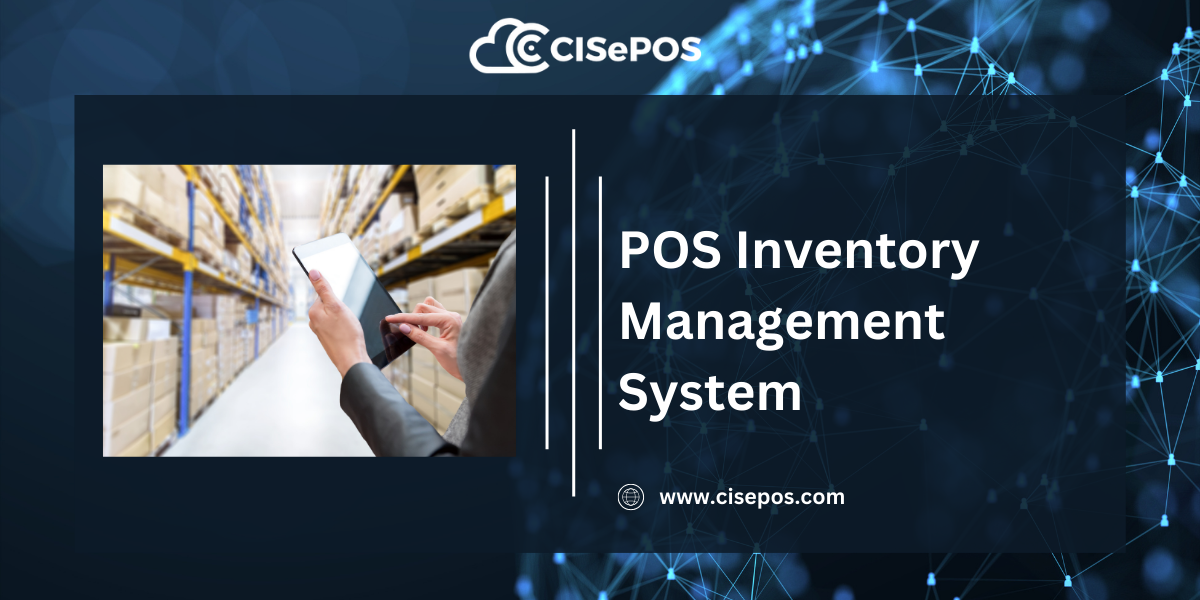
POS Inventory Management System - A Guide
Inventory management can be tough for business owners, especially with numerous products and locations. But worry not! A Point of Sale (POS) system can simplify this, saving time and money. This guide will show how to track inventory effectively, analyze sales data, and make wise decisions for business growth. Ready to improve your inventory management with these tips?
Benefits of Using a POS System for Inventory Management
There are several benefits of using a POS system for inventory management. Here are some of the most important ones:
Real-Time Inventory Tracking
POS management system tracks inventory instantly. It updates counts automatically after each sale, keeping you informed about stock levels to avoid overselling or underselling.
Accurate Sales Reporting
A Point of Sale (POS) system generates detailed sales reports. These reports show your best-selling, most popular, and most profitable products. They help make informed inventory management decisions.
Efficient Reordering
A POS inventory control system automates ordering. When inventory reaches a set level, it generates and sends a purchase order to suppliers, saving time and reducing stockouts.
Reduced Shrinkage
Shrinkage is inventory loss due to theft, damage, or errors. A POS system reduces shrinkage by recording transactions and alerting about discrepancies. It also monitors employee actions to spot suspicious behavior.
How To Manage Inventory With A POS System
Set Up Your POS System
To begin managing inventory with a POS system, first set up the software. This involves listing products with codes, prices, and details. Also, configure inventory settings such as reorder points and minimum stock levels.
Use Barcodes
Barcodes track inventory swiftly in a POS system. Each product requires a unique barcode for cashiers to scan during sales. This automatically reduces inventory as items sell, simplifying stock tracking.
Monitor inventory levels
Regularly checking inventory is vital for stock management. A POS system provides instant inventory reports, highlighting top sellers and items needing restocking. This data helps decide when and how much to reorder.
Set Up Automatic Reordering
Many POS systems have an auto-reorder feature to prevent stock shortages. You set the system to reorder items when they reach a defined level, like the minimum stock. This prevents stockouts and keeps inventory balanced.
Use Inventory Forecasting
Inventory forecasting predicts product demand by analyzing past sales and trends. A POS system estimates future inventory needs to avoid overstocking or understocking, ensuring enough products to meet customer demand.
Conduct Regular Inventory Audits
Regular inventory checks are crucial, even with a POS system. Count your inventory, compare it to POS data, and address any discrepancies to ensure accurate stock levels.
Conclusion
A POS system simplifies operations and ensures product availability. Accurate setup, barcodes, inventory checks, automatic reordering, forecasting, and routine inventory audits support effective management for smooth business operations.
Recent Posts
- The Major POS Features and Benefits You Should Know
- Difference Between Cloud Pos Vs Traditional Pos
- Best POS System Benefits for Restaurants in Dubai
- Types Of POS Machine
- Restaurant POS System An Easy Way to Optimize Operations
- Where Does A Point of Sale Transaction Take Place
- Most Common Problems with a POS System
- CRM vs POS
- The Rising Importance of POS Inventory Management
- How POS Integration with E-Commerce is Helpful
- POS Inventory Management System - A Guide
- Android-pos-system
- How POS Security Systems Protect Businesses
- Optimizing Retail Operations with Automated Inventory Management
- Decoding the Advantages and Disadvantages of POS Systems in Retail
- Exploring Types of POS Systems for Retail Success
- Efficient Product Catalog Management Strategies for Retail Businesses
- Toast vs Clover: A Thorough Analysis
- The Necessity of POS System in Grocery Stores
- Shopify POS vs Square POS: Examining the Pros and Cons
- Is POS Integration Essential to Survive In Today’s World?
- Finding the Right POS System for Hair Salon
- The Ideal Café POS System
- Is POS Integration Essential to Survive In Today’s World?
- How to Use POS System - A Guide for Beginners